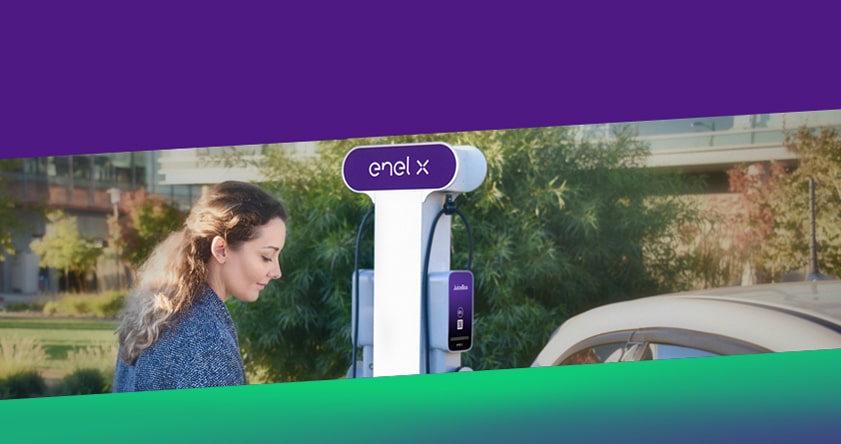Why Smart City Planners Should Install EV Charging Stations

Smart cities use technology like sensors, WiFi connectivity, and data collection, to better equip urban planners in managing a region’s environmental resources. Until recently, cars and trucks were not electronically connected to a city’s energy and data infrastructure, but with the rapid rise of electric vehicles that plug into the grid, everything changes. Smart city planners can accelerate the shift to sustainable transportation—kickstarting the process by installing electric vehicle charging stations.
For a smart city the most immediate environmental benefit of EVs is straightforward: taking polluting internal combustion vehicles off the road—and replacing them with zero-emission cars, trucks, and buses.
A January 2020 report from the U.S. Conference of Mayors revealed that cities are stepping up their plans to reduce carbon emissions and air pollution. The report is based on input from 182 cities. Sixty percent of those cities have launched and many will significantly expand a climate initiative in the coming year. It’s not a coincidence that a nearly identical 61 percent of those cities support public electric vehicle charging stations.
Seattle is a prime example of how smart cities have influence over EV adoption. The city’s Department of Construction and Inspections estimates that new legislation will support the creation of thousands of new EV-ready parking spaces each year. “Seattle has always invented the future, and we will lead the transition to electric vehicles to combat climate change,” said Mayor Jenny Durkan. “Our actions to reduce emissions from transportation will help create a healthier and more just city, with a stronger economy.”
U.S. mayors are preparing for the coming wave of electric cars to arrive. Right now, in mid-2020, there are well over 1 million EVs on North American roads. Guidehouse Insights, a research firm, forecasts that number to increase to 1.8 million by 2030. By most accounts, that’s a conservative estimate.
Urban planners must keep in mind that if they want the growing EV market to flourish in their city, they must first ensure that zero-emission vehicles have a place to charge. The International Energy Administration (IEA) recommends one public charging station for every 10 EVs in a region. To maintain that ratio, cities will have to pick up the pace.
The California Energy Commission estimates that the Golden State will need a quarter-million chargers in public spaces and multi-unit dwellings by 2025. Those chargers could add 1 GW of peak demand to the power grid.
It’s not strictly a matter of spreading new technology and charging stations around a city in order to create a transport system that aligns with the smart city initiative. Comprehensive plans need to consider real-world charging patterns. Commercial charging stations with connectivity and robust analytics tools can show which locations are being utilized and better manage grid demand. Smart city planners want to avoid installing charging with outdated technology, with insufficient power, and at low traffic locations where chargers will seldom be used—sometimes referred to as “stranded assets.”
Focus on High-Use Vehicles
It’s critical for smart city planners to understand that nearly all EV charging takes place at home. Private vehicles are parked (and not in use) for about 95 percent of the time. That’s why the World Economic Forum recommends that cities put a high priority on electrifying high-use vehicles, such as the city’s municipal fleet, taxis, rideshare services, and public transportation.This would not only help build smart infrastructure for the transit system but also help the traffic condition and smart parking as well. Policies that support more EV charging will need to work with multiple stakeholders, especially grid operators. San Diego Gas & Electric works with the Port of San Diego to install chargers for electric medium- and heavy-duty vehicles and forklifts. Virginia-based Dominion Energy and Duke Energy in North Carolina collaborate with school districts to utilize electric school buses.
“Electric buses are the biggest thing cities are doing, in addition to light-duty fleets,” Lang Reynolds, Duke Energy’s director of electrification strategy, told Utility Dive in a recent interview with the industry publication. Bill Boyce, supervisor of electrified transportation for Sacramento Municipal Utility District, added, “We’ve worked with city staff, even helped them get grants from the state to help the planning.”
The city of Columbus, Ohio, is adding EVs to its public fleet and promoted the use of EVs deployed by Columbus Yellow Cab.Cab companies and local car dealers who install charging stations are often tied directly to the city’s carbon-reducing goals. This is a great example of a city that is providing transportation options that creates smart city solutions.
Make EV Charging Convenient and Equitable
The first order of business is to make charging an electric vehicle convenient and affordable. EV drivers that have a positive experience will spread the word. Planners can help the process by offering perks for electric cars, such as free parking, discounted charging, priority lanes, and exemption from congestion pricing.
Charging at workplaces and multi-family dwellings is also critical. New York’s governor just announced an investment in clean energy resources, such as EV charges, for 350,00 moderate to low-income residents. It’s likely that more grants and other programs like this will continue to encourage equity in EV adoption in order to reduce emissions in low-income and disadvantaged communities.
Vehicle electrification, when combined with data-centric charging software, like JuiceNet Green, can maximize the use of renewables by charging at specific times of the day. EV charging is part of a broader smart city framework that includes smart buildings, local generation (such as rooftop solar), microgrids, and stationary energy storage.
With the rapid growth rate of urbanism combined with the growing number of EVs, smart city planners are swinging into action without delay with smart city technology. In early January, the city of San Francisco passed legislation that requires new buildings to be EV ready with wiring and conduits for chargers and related systems for solar panels. In 2018, nearby San Jose saw 21 percent of the city’s car registration waselectric. As a result, the urban area now requires 70 percent of parking spaces in new multi-family dwellings to be EV ready.
EV charging stations are data hubs
As more EVs are added to city streets, charging stations become distributed data hubs for understanding charging behavior, which can be used to determine where to expand future charging locations and how energy resources (and roadways) are being used. Optimizing the timing of an EV charging event is also essential, which is why many smart cities are choosing to install smart chargers, which avoid drawing power during strained peak periods.
Nearly all electric vehicle charging today is one-way, where an EV can only pull energy from the grid and not give energy back to the grid.However, this is likely to change.When this technology goes mainstream, EVs can also serve as much-needed back-up energy storage for the grid.
For example, EV chargers can kick into action when solar power is generated during the day. Later on, during a period of peak energy demand across the grid—like when many consumers start turning on appliances in the early evening—the clean solar power stored in an EV’s battery can be fed back to a home or into the grid. This is also called vehicle-to-grid or V2G integration and is technology. One of the primary barriers Enel X sees regarding V2G adoption is a lack of interconnection pathways to enable advanced VGI functionality. Developing standards and interconnection pathways for a mobile inverter or alternating current V2G system represents the largest barrier to commercializing V2G capabilities for mass-market light-duty EVs. The CPUC hosted a subgroup in 2019 to identify the unique challenges posed by interconnecting AC V2G systems, which differ from DC V2G systems that appear in form and function essentially the same as standalone energy storage. The CPUC process identified near-term updates to relevant SAE and UL standards, while more work needs to be done to develop a streamlined process for testing and certification, and ultimately update the Rule 21 tariff.
Nonetheless, the vast potential of EVs as a tool for Smart City planners begins with installing today’s state-of-the-art smart, grid-connected, commercial EV charging stations.







